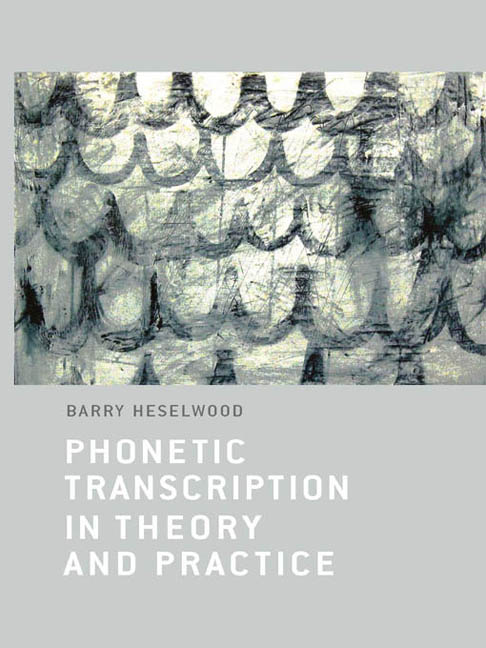Book contents
- Frontmatter
- Contents
- List of Tables
- List of Figures
- Preface
- Acknowledgements
- Introduction
- 1 Theoretical Preliminaries to Phonetic Notation and Transcription
- 2 Origins and Development of Phonetic Transcription
- 3 Phonetic Notation
- 4 Types of Transcription
- 5 Narrow Impressionistic Phonetic Transcription
- 6 Phonetic Transcription in Relation to Instrumental and Other Records
- 7 Uses of Phonetic Transcription
- Glossary
- References
- Appendix: Phonetic Notation Charts
- Index
5 - Narrow Impressionistic Phonetic Transcription
Published online by Cambridge University Press: 07 December 2017
- Frontmatter
- Contents
- List of Tables
- List of Figures
- Preface
- Acknowledgements
- Introduction
- 1 Theoretical Preliminaries to Phonetic Notation and Transcription
- 2 Origins and Development of Phonetic Transcription
- 3 Phonetic Notation
- 4 Types of Transcription
- 5 Narrow Impressionistic Phonetic Transcription
- 6 Phonetic Transcription in Relation to Instrumental and Other Records
- 7 Uses of Phonetic Transcription
- Glossary
- References
- Appendix: Phonetic Notation Charts
- Index
Summary
Introduction
In this chapter I shall argue that the value of narrow impressionistic phonetic transcription is that it is a method for representing in proper phonetic notation an analysis of what speech sounds like to a phonetically trained listener. Ezra Pound strove in his imagist doctrine for a poetic language which would be an accurate objective expression of subjective experience (Moody 2007: 226), and that captures fairly well what impressionistic phonetic transcription tries to achieve. What we are doing when we make an impressionistic analysis of speech is trying to express holistically experienced exemplars as realisations of the products of category intersections by exploiting the relation between a theoretical model and a descriptive model. It is the categories of the theoretical models that confer some measure of objectivity. The centre of attention in impressionistic analysis is on sound-as- heard, not sound-as- produced or sound-as- transmitted. In fact in Section 5.1 sound for our purposes is defined as something which exists only in the experience of hearing it. Experiences cannot be measured in the way that articulatory gestures and pressure-waves can, but what experienced phenomena and measured phenomena have in common is that they are amenable to analysis – not into ontologically the same kinds of constituents, but an analytic approach is possible in both cases, guided by the same body of phonetic theory.
Narrow impressionistic phonetic transcriptions are specific transcriptions. They take as their raw data particular utterances of individual speakers. The aim may be to focus on a particular utterance, as in the context of forensic phonetics and conversation analysis, or on that individual, as in a clinical context, or the focus of interest may be wider, inferring the speech patterns of a speech community from the utterances of one or two speakers. Whatever the aim, it is a complex process requiring, in the words of Abraham Tucker, the eighteenth-century author of Vocal Sounds, ‘constant close attention’ in which the transcriber faces ‘a continual hazard of blunders’ (quoted in Abercrombie 1948/1965: 63). In order to try to understand the process, it can be broken down into different stages (Knight 2011). First of all, speech has to be heard. The process of hearing can be divided into reception and perception.
- Type
- Chapter
- Information
- Phonetic Transcription in Theory and Practice , pp. 178 - 222Publisher: Edinburgh University PressPrint publication year: 2013



